ROLE OF 2JMS IN SPORT AND EXERCISE
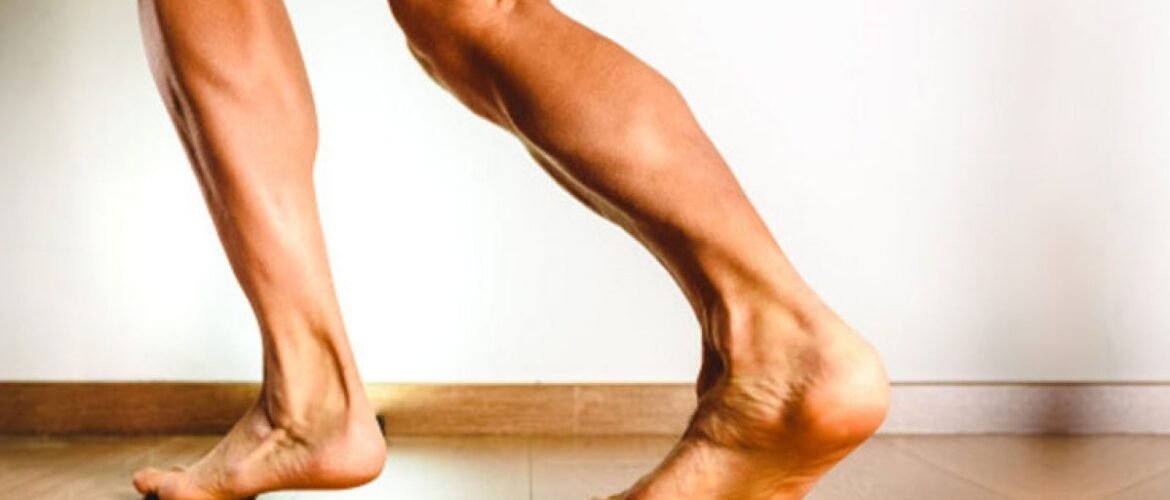
Dr. Akshat Pandey is GAYO’s Hon. Head of Faculty – Exercise & Sports Kinesiology & Biomechanics & Sports Injury Management. He is also a member of Academy’s Internal Quality Assurance Committee.
He is a sports physio with deep national and international experience. He has worked with the Indian Weightlifting Federation Core Group London 2012 / SAI-NSNIS Patiala, CWG2010 Core Group and the Indian Cycling Federation / SAI-NSNIS Patiala, CWG2014 / Asian Games 2014 Korea Indian Gymnastic and at the National Boxing Academy – Rohtak – Sports Authority of India. His email address is: pandey.aiims@gmail.com
In this article, Akshat examines the role of two jointed muscles in sport and exercise.
Most muscles in the body cross a single joint and thus create movement of the bones – or, biomechanically, “levers” – in the form of a flexion, extension, adduction, abduction or rotations, to name a few of the “kinesiological” movements. The Two Joint or Biarticulated Muscles (let’s refer them affectionately as “2JMs”) are muscles that cross two joints of the body and are structured to perform more than one joint function. For instance, the Rectus Femoris from the quadriceps femoris crosses both the hip and knee joints and performs both hip flexion and knee extension. It both lifts and extends your leg (knee joint).
2JMs Advantages
The 2JMs are enable efficiency of movement. Logically, less energy is required to move two joints with the same muscle than recruit two different muscles. This is why most of the 2JMs are used for strength and speed (power) movements like walking, jogging, running, jumping, climbing, etc. Importantly, the 2JM is made to stretch before it contracts, consequently maximizing power for a ballistic movement.
Advantages include –
Increase leverage and efficiency in muscles movements –
Provide stability
Energy transfer
Ease of Control
Reduction in Muscle bulk
Reduce velocity of contraction
Advantage in Motor coordination of activities
Assistance in Active and Passive movements
A single-joint muscle can generate movement only at the joint it crosses. But, a 2JM can produce movement at more than one joint. This is of advantage in many human movements. However, it can become inefficient when trying to exert full active or passive motion at two or more joints at the same time. The former results in what is called active insufficiency and the latter in passive insufficiency.

This is a disadvantage with all 2JMs: Performing both joint functions at the one and same time reduces the composite force that is capable of being produced at both the joints. You cannot have maximum knee flexion and equal intensity of plantarflexion at the one and same time.
Active Insufficiency of Muscle
Active insufficiency happens when a multi-joint muscle reaches a shortened length where it can no more exert an effective force.
Example: you can fully flex the knee on one leg while simultaneously try to swing that leg back to achieve full hip extension. Hip extension will be restricted because the hamstrings are unable to shorten enough to produce the full ROM. A cramping in the hamstring muscles can occur during this movement. Similarly, if you try hyper-extended the hip joint, and then flexing your knee, you will experience limited knee flexion.
The hamstrings can only perform one of these functions fully at one time. When both are attempted at the same time, the muscle goes “slack” and is thus unable to contract effectively because it is already in a contracted state. Extending the knee joint should restore full ROM of hip extension and the difference will be significant.
Active insufficiency reflects the inability of a multi-joint muscle to apply an adequate force in all degrees of motion.
Another example is the finger flexors. You may have noticed that you cannot produce a tight flex with your wrist bent (in flexion). This is because of active insufficiency of the finger flexors. They can only make a tight flex with the wrist in a neutral position.
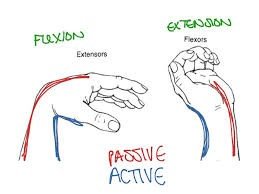
The gastrocnemius of the calf plantar flexes the ankle but also crosses over the knee joint. Therefore, if the knee is bent, or flexed, shortening the muscle at that joint, it can no longer apply as effective a force in plantarflexion. This fact is taken advantage of during calf raises, when, if done seated with the knees bent, shifts the focus from the gastrocnemius, which is actively insufficient, to the soleus, making it the prime mover in seated calf raises. When the calf raises are done standing, the gastrocnemius can apply a full force.
Passive Insufficiency
This is the inability of a 2JM to lengthen to a point that allows full ROM of all the joints it crosses simultaneously. An instance of passive insufficiency will be short hamstrings, which results in the inability of the muscle to normally lengthen to the point that an integrated combination of hip flexion and knee extension can occur – something which is in all sports.
The passive insufficiency of the hamstring can be experienced by lying on your back and using your arms to bring one leg toward your shoulder while keeping the knee fully extended. The hamstring will experience a noticeable stretch and at some point you will no longer be able to move the leg toward the shoulder. The hamstring muscles are not capable of lengthening to a degree that allows full hip flexion and full knee extension simultaneously. However, if you now flex (bend) the knee, you will be able to bring the leg closer to the shoulder.
Role in Sports and Fitness
When dealing with Active and Passive insufficiencies in sports and fitness training special emphasis ought to be given to varying the training into steps or phases taking into consideration specific aspects of body weight, muscle girth, ROM and load distribution both during off and on season periods as to avoid tears, swelling, soft tissue trauma and compartment syndrome.
Even as you are reading this, try these “experiments” as examples!
Consider the hamstring muscle group. Stand up and extend your leg behind you such that the ankle is plantarflexed – toes are pointing away from the shin bones. Now, flex your knee by bringing your toes towards your butt. You will feel the middle of the hamstring muscle getting into a cramp! The 2JM trying to perform both functions (hip extension and knee flexion) to their maximum. The result is weakness and cramping!
In the weight training studio, the knee extension machine has a backrest that inclines backwards. You settle into the seat with your back resting against the inclined backrest. In this position, it is easy to extend the knees. The rectus femoris at the hip end has stretched or relaxed to enable maximum contraction at the knee’s end thus enabling a powerful contraction leading to commensurate force in the knee extension. Now, lean forward to the extent possible in hip flexion position – your chest should be over the thighs. Now, you will find the knee extension being not as “easy” as in the earlier, regular, position. In the hip-flexed position, you attempted to contract both the ends of the rectus femoris at the same time. The contraction at the knee joint will thus necessarily be weak.
Or, do a Teaser movement! Sit on the floor and lean back such that your torso tilts backwards. Raise both the legs up with knees bent such that the lower legs are parallel to the floor. Now, in this position, extend the knees to straighten the legs – and, hold. Difficult to hold? Do you feel the quadriceps cramping? It is natural to get a cramp-like feeling in the quadriceps when you try to straighten your legs in the Teaser because it is trying to lift the hip and straighten the knee at the same time. This is another example of the rectus femoris’ 2JM nature.
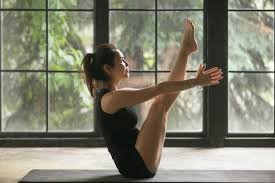
These 2JMs cannot be ignored during physical activities or activities like running downhill or attempting a Teaser or an abdominal exercise like the V-Ups! Training these muscles will influence the way we train for sports or exercise where multiple joints are involved.
Let’s consider here some of the 2JMs.
Rectus Femoris
The Rectus Femoris in the Superior / Medial and Anterior Compartment of thigh (Quadriceps) is the only muscle in quadriceps group that crosses the hip joint (Anterior Inferior Iliac Spine and Ilium above the Acetabulum ) and the knee joint (in the form of Quadriceps Tendon at the base of Patella via Patellar Ligament). Movements produced are the knee flexion and hip extension.
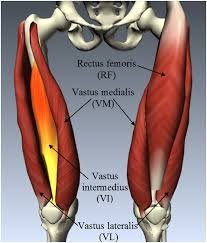
Rectus Femoris strain is commonly seen in football or sprinting, running or jumping. The common injuries are – partial tear, swelling or groin pain. Injury causes include a sudden onset of eccentric contraction of muscle or kicking (knee extension with hip flexion) with greater force without warm up. Usually, the injury occurs near to the muscle’s origin. Tenderness is usually present with pain in thigh (anterior aspects, medial and distal aspects). Adequate rest, Cryokinetics and, in the last resort, non-steroidal anti-inflammatory drugs are the treatment of choice.
Sartorius
The longest muscles in the human body, it runs down the thigh in the anterior compartment. It crosses the hip joint and the knee joint. Commonly described as a knee extensor, it produces true flexion at the hip joint. It contributes to actions including flexion, lateral rotation and a weak abduction at the hip joint.
Common injuries are in association with other factors such as weakness in knees and chronic knee pain. Overuse injuries or faulty training are precipitating factors irrespective of game or age concerned. Also known as the “Tailor’s Muscle” it originates from the ASIS (or anterior iliac superior spine, located at the anterior extremity of the iliac crest of the pelvis) from where it spirals down to cross the knee.
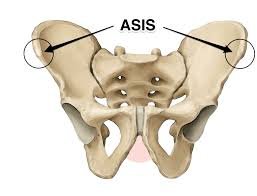
It is associated with bursitis in Pes Anserinus (“goose foot”) – the conjoined tendons of sartorius, gracilis and semitendinosus that insert onto the anteromedial (front and inside) surface of the proximal tibia. Injury causes include sedentary lifestyle involving a lot of sitting, chronic muscle tightness and, of course, actions demanding simultaneous explosive muscle contractions at both ends of the muscle. Symptoms include burning sensation in front of the hip, hypersensitivity and inflammation inside of knee joint. Rehab will include adequate rest, local application of ultrasound therapy, ice massage or NSAIDs.
Tensor Fascia Latae
It is a muscle of the thigh which acts on the illiotibial band and assists in hip joint flexion, medial rotation and abduction. It proceeds from the ASIS to the Illiotibial Track via Greater Trochanter.
Common injuries include lower limb overuse injuries, ow back pain, strain, due to faulty training and posture, etc. The Illiotibial Band Syndrome is symptomized by inflammation, decreased strength in quadriceps, poor flexibility and friction during walking etc. These injuries ate commonly found in long distance runners who typically may suffer from over use and weakness of quadriceps, leg length variations, abnormal pelvic tilt and orthopaedic conditions such as bow legs. Treatment includes adequate rest, cryotherapy, elevation, stretching and NSAIDs.
Hamstrings
All the three muscles in this suite are 2JMs – Semitendinosus, Semimembranosus, Biceps Femoris (Long head). They play a major role in knee joint flexion and hip joint extension, playing an antagonist to the Quadriceps Femoris. The muscles originate in the Tuberosity of Ischium and Linea Aspira and insert at the superior parts of medial and lateral Tibia and the lateral side of Fibula. They play a positive role in activities like running, walking, and related physical activities.
Common injuries include strain or the pull, partial tear or overload issues which may vary according to games’ specificity. Hamstring injuries are most commonly seen in soccer, basketball, tennis, where running is combined with rapid start and sudden stops. Tear and sprains are common. Causes sudden overload which inhibits with muscle tightness, muscle imbalance, poor conditioning, fatigue, dehydration and related physiological aspects.
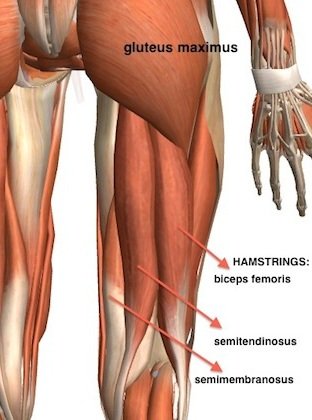
Rehabilitation and Recovery
Grade 1 hamstring injuries will take few days to 14 days week while Grade 2 and 3 injuries may extend to more than four weeks’ time subject to local and associated factors. Treatment usually starts with R.I.C.E. protocols, adequate rest and NSAIDs, immobilization with physiotherapy as prescribed.
Gastrocnemius
This superficial,two headed muscle is found in the posterior side of lower limbs attached to knee, ankle and subtalar joints. It produces plantarflexion of the foot at the ankle joint and flexion of leg at the knee joint.
This large calf muscle crosses both the knee and ankle joint and, therefore, it executes both knee flexion and plantar flexion (pointing your toe downward as in “calf raise”). While walking or running, the leg and foot first lengthen out in front for your foot strike (knee extension and dorsi flexion, respectively) which moves the gastrocnemius into a stretch. As you stride forward and your leg travels behind you, the gastrocnemius flexes the knee and plantarflexes the ankle (toes point or plant into the ground) so that you can propel yourself off the ground.
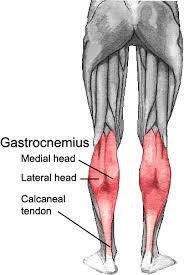
Common injuries include over-stretching against resistance, standing in “tip-toe” position and may be accompanied by pain, swelling, bruising in the calf muscle along with ankle injuries like fractures, laxity, weakness and muscle cramps.
Rehabilitation and Recovery
Usually lasts for two weeks and respond well to conservative treatment protocols of R.I.C.E. and supportive taping. However, if the pain continues, specific diagnosis and treatment approaches may be required.
Biceps Brachii
The biceps brachii has two heads – long head and short head. The long head and short head are distinguished as per their origin at the coracoid process and supraglenoid cavity of scapula.

Implications in resistance training
An awareness of the 2JMs will lead the exerciser and his trainer to consider when and how to perform variations of an exercise. For example, a knee extension with plantarflexed ankle will also work the upper shin muscles (anterior tibialis) while a plantarflexed ankle will result in more engagement of the quadriceps femoris. See the video in which our Manika Pradhan demonstrated four reps in each of the three ankle positions. Video MP HC
The common injuries include tendon tear & tendinitis (inflammation)
- Proximal biceps tendinitis
- Proximal biceps tendon tear
- Distal biceps tendinitis
Causes include moving and twisting the shoulder in an “awkward” way, such as –
- Fall on outstretched hand
- Sudden lifting of weights (weightlifting)
Symptoms include a “popping” sound (possibly a rupture), a sharp pain at elbow or shoulder and a feeling of weakness.
Rehabilitation and Recovery
Adequate rest, ice, taping and local application of ultrasound therapy are treatments of choice as the case may be but if pain persists for long and is non-responsive, surgical intervention may be an option. Total recovery time may vary from week to three weeks irrespective of the treatment approach undertaken
Implications in resistance training
An awareness of the 2JMs will lead the exerciser and his trainer to consider when and how to perform variations of an exercise. For example, a knee extension with plantarflexed ankle will also work the upper shin muscles (anterior tibialis) while a plantarflexed ankle will result in more engagement of the quadriceps femoris. See the video in which our Manika Pradhan demonstrated four reps in each of the three ankle positions. Video MP HC
In the same manner, leg curls (knee flexions) with dorsiflexed ankle will also work the upper gastrocnemius while a plantarflexed ankle will place more pressure on the lower hamstrings. In this manner, the anterior tibialis and the gastrocnemius can be worked from the upper ends considering that the usual “shin flexions” and “calf raises” work the lower leg muscles only from the ankle joint and not the knee joint! See the video in which our Manika Pradhan demonstrated four reps in each of the three ankle positions.
The biceps brachii is most powerful in the form being prime mover in elbow flexion (bicep curl exercise) but is an assistant mover in shoulder joint flexion (the dumbbell front raises). This will also give an idea of what and why is a difference in biceps curls in an incline seated position, seated or standing position and in preacher curl position!
Because of their dual actions, the 2JMs are not as powerful as most single-joint muscles. For instance, consider the three vastus muscles of the quadriceps femoris and the biceps brachialis muscle of the upper arm. These single joint muscles can be considered the true prime movers at most joints.
2JMs in the Human Body
Arms
- Biceps (Short Head)
- crosses shoulder and elbow
- performs elbow and shoulder flexion
- also pronates at elbow joint
- Triceps (Long Head)
- crosses shoulder and elbow
- performs elbow and shoulder extension
Legs:
- Rectus Femoris
- crosses hip and knee
- performs hip flexion and knee extension
- Sartorius
- crosses hip and knee
- performs hip flexion (with abduction and lateral rotation) and knee flexion (the “Tailor’s Muscle” due to the tailor’s physical position)
- Tensor Fascia Latae
- crosses hip and knee
- performs hip flexion, hip abduction, and internal rotation along longitudinal axis
- Hamstrings (Semitendinosus, Semimembranosus and long head of Biceps Femoris)
- cross hip and knee
- perform hip extension and knee flexion
- Gastrocnemius
- crosses knee and ankle
- performs knee flexion and plantar flexion
